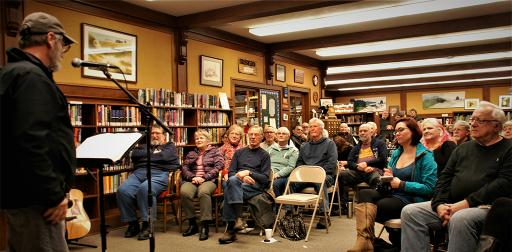Summary | Excerpt | Reading Guide | Reviews | Beyond the Book | Read-Alikes | Genres & Themes | Author Bio

The Book Series #2
by Jean Hanff KorelitzThis article relates to The Sequel
In The Sequel by Jean Hanff Korelitz, readers get a taste of what authors go through in the rite of publishing passage known as "the book tour." For new or established authors, a book tour usually includes an (often hectic) travel schedule to bookstores, schools, and writing conferences; book signings; and readings from their work. For readers and book buyers who attend these events, it can seem like a sweet deal. But what is it like on the other side for the author? A lot of work, it turns out.
 Science fiction writer John Scalzi revealed the inside skinny on a typical book tour in a 2017 Los Angeles Times article. The first thing he mentions is the sheer amount of disorientation an author may feel with so much travel. For Scalzi, one tour included travel to 24 cities over five weeks, leading to what he calls "time slippage," where it is hard to keep track of not only what city you're in but also what day it is. Then there's the physical grind itself of traveling to and from events, signing books, talking to readers, grabbing food on the run, and then starting all over again—and of always being "on":
Science fiction writer John Scalzi revealed the inside skinny on a typical book tour in a 2017 Los Angeles Times article. The first thing he mentions is the sheer amount of disorientation an author may feel with so much travel. For Scalzi, one tour included travel to 24 cities over five weeks, leading to what he calls "time slippage," where it is hard to keep track of not only what city you're in but also what day it is. Then there's the physical grind itself of traveling to and from events, signing books, talking to readers, grabbing food on the run, and then starting all over again—and of always being "on":
"As the author, you have to be up and appear happy and be glad people showed up, and you have to do that from the moment you enter the event space to the moment you get in a car to go back to the hotel, which can be several hours."
Most of the wear-and-tear of a book tour can be mitigated by media escorts, also known as "handlers," who are hired by publishers (mostly for bigger name authors). Handlers often run interference for authors and help an event run smoothly, from picking up the author at the airport to providing snacks.
For indie authors or those without a traditional publisher to orchestrate a book tour, more footwork and foundation laying is involved. Sassafras Lowrey shared tips about organizing an indie book tour in a 2023 Publishers Weekly article. The key, she says, is "building connections and relationships with other people in the book world. Literary friendships and collaborations with other writers are a great way to learn about bookstores and other venues that might be interested in hosting a reading or book release."
While authors with traditional publishers have most of their travel paid for, indie authors who want to go on a book tour must reckon with this financial component. Transportation, hotel, and other associated costs are often out of pocket. But Lowrey advises new authors to "get creative" with targeting their niche audience. "Libraries also frequently support visiting authors, as do some book clubs," she writes. Also, there may be artist grants available that can help cover expenses.
Even as virtual book tours were popularized early in the COVID-19 pandemic, the last few years have seen the return of in-person book tours—still one of the best ways to connect readers with their favorite books and authors, and authors with their readers.
An image of the NW Authors Speakers Series, courtesy of the Cannon Beach Library.
Filed under Books and Authors
![]() This article relates to The Sequel.
It first ran in the November 6, 2024
issue of BookBrowse Recommends.
This article relates to The Sequel.
It first ran in the November 6, 2024
issue of BookBrowse Recommends.
When men are not regretting that life is so short, they are doing something to kill time.
Click Here to find out who said this, as well as discovering other famous literary quotes!
Your guide toexceptional books
BookBrowse seeks out and recommends the best in contemporary fiction and nonfiction—books that not only engage and entertain but also deepen our understanding of ourselves and the world around us.